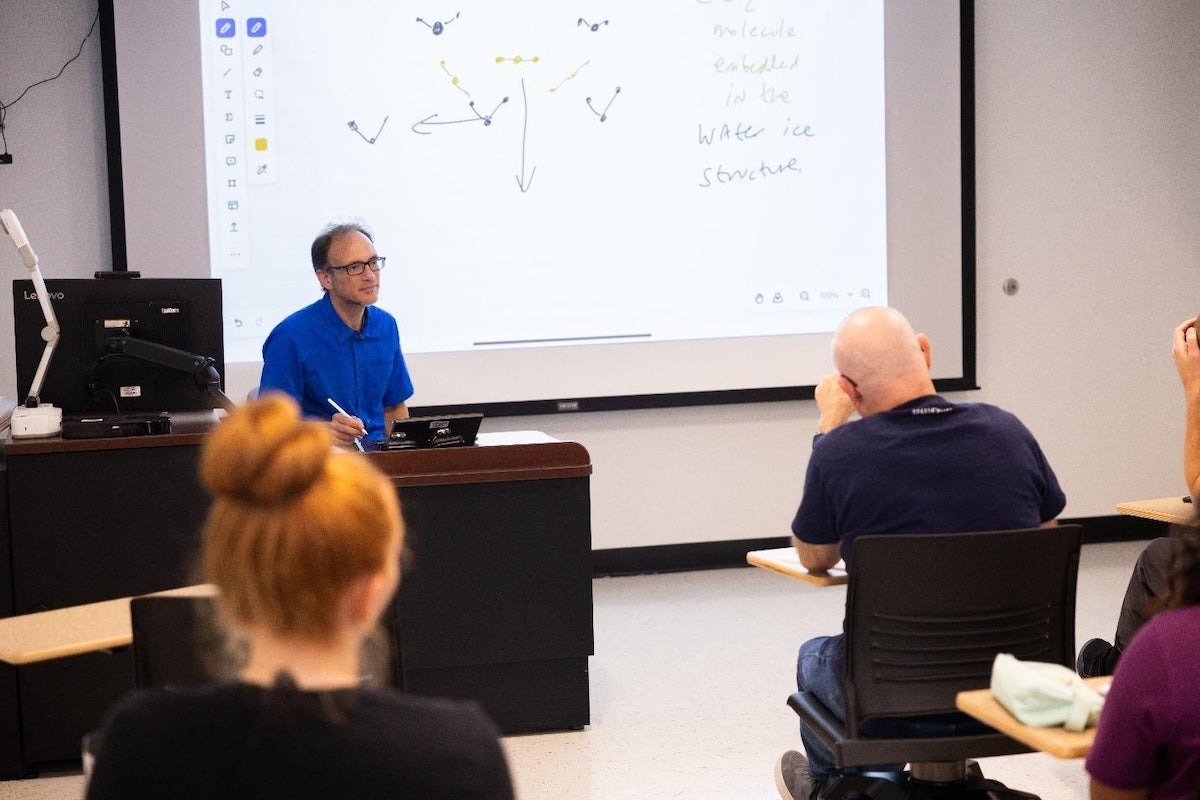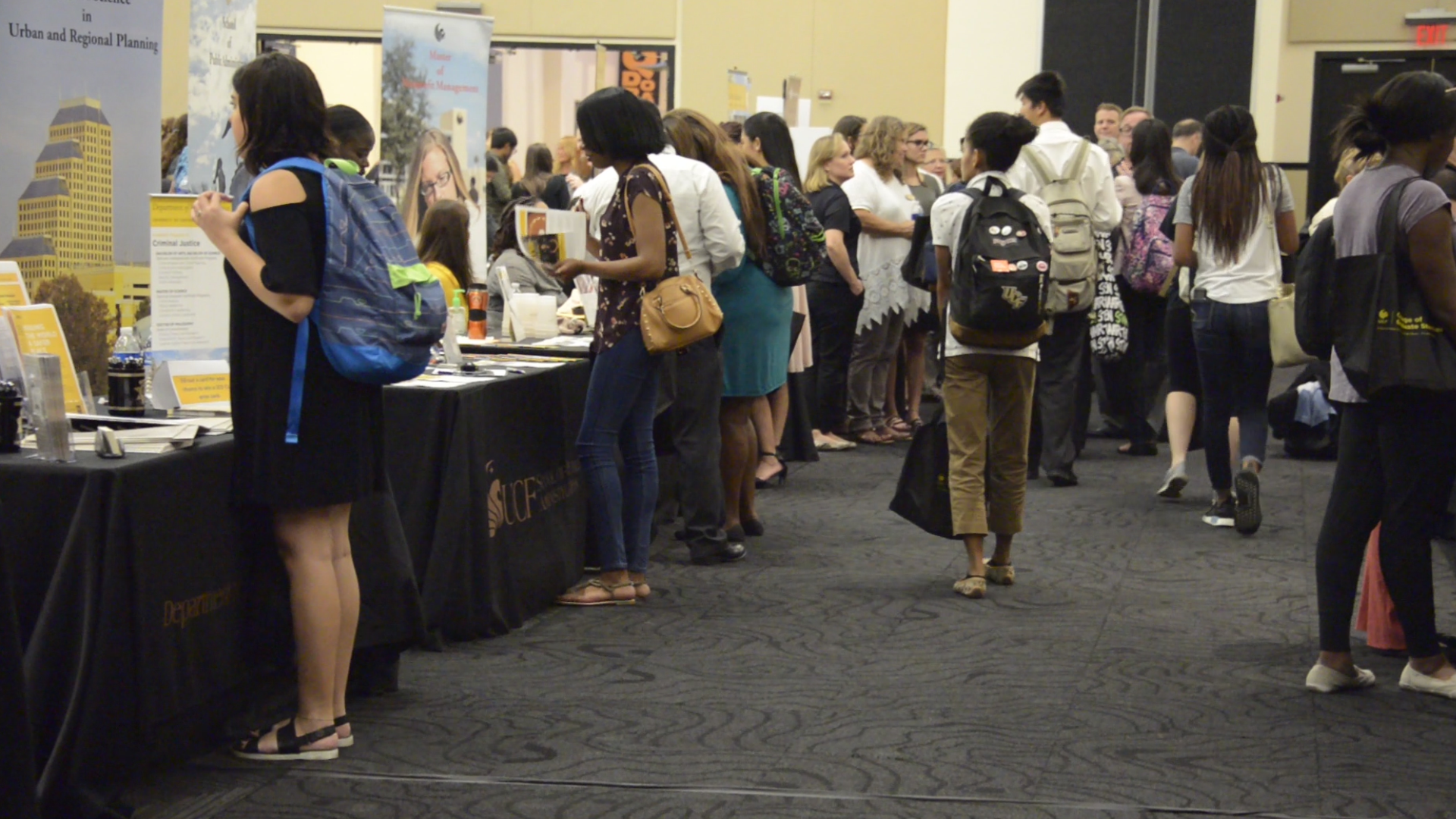Charge On, it’s National Battery Day
Far from the triple As you have to scramble to find during hurricane season, the battery technology being developed at UCF is much more advanced than the daily essentials.
Professor of nanotechnology, materials, and optics Jayan Thomas, who conducts extensive research in this area, explains how batteries work and what his team is doing to make batteries of the future limitless.
How Lithium Batteries Work
Batteries rely on electrons’ and ions’ movement to work. The positive, or anode, and negative, or cathode, ends of a battery must be connected through a circuit so that electrons can move around and power devices.
Rechargeable lithium batteries undergo a cycle of losing and gaining charge. When a battery is receiving a charge from a power outlet, all of the lithium ions move into the cathode end of the battery where it is stored to be used later. Once a battery is completely charged, the ions leave the cathode end and flow directly to the anode side, which excites the electrons stored there. Only from the anode side of the battery can the lithium ions and electrons work together to send energy to the device. Once the lithium energy is used up, the device responds by dying, but once plugged into a power source, the lithium ions flow back to the cathode side.
Cables and Fibers that Can Store Energy
Energy travels from fibers in power lines into the wiring in your home to deliver a charge to batteries. But, how about using these fibers also to store energy?
Thomas and his team have transformed the outside of a standard copper cable into an energy storage device using nanotechnology. The energy storage is not affected by the electricity transmission through the core of the cable and vice versa. They can have multiple applications ranging from storing excess energy from solar panels to making wearable devices made with thin fibers conveniently chargeable, which is especially beneficial for people working outside in the sun for a long time.
For example, soldiers on the battlefield carry substantial loads of batteries to keep their gadgets charged. But delivering these batteries to soldiers in hostile environments is dangerous and extremely expensive. In the future, these garments may enable soldiers and even firefighters to charge devices just by slipping them into a pocket.
Future Battery Charging
Thomas imagines untraditional ways of storing energy so that the charging of electric vehicles and electronic devices may become faster and more efficient in the future. One area Thomas is looking into is battery integrated solar panel that can be installed on the roof of an electric vehicle.
“What we are looking at is the complete transformation from gasoline/hybrid vehicles to all-electric vehicles,” says Thomas. “Take, for example, a Tesla car. The charging time is around an hour if you use a supercharging station, and it takes more than eight hours to charge a car if a normal charging outlet is used completely. Many people do not want to drive long-distance if the charging takes that long. This is a major limitation for its widespread implementation. But imagine if charging took only ten minutes.”
This is why Thomas and his team are currently exploring ways to make batteries charge more efficiently.
“This is where the energy harvesting comes into the picture,” Thomas says. “If a solar panel attached to a car could also harvest and store energy while driving or parked in the sun, this extra energy can be beneficial to get additional miles.”
“Batteries are bound to play big roles in our future,” says Thomas.
Share This Article

UCF Women’s Club Honors 3 Graduate Students with Prestigious Sheila B. Somerville Scholarship
Financial support is often the cornerstone of academic success, and for many students, scholarships open the door to higher education. Beyond easing financial stress, these awards provide recognition, motivation, and a...
Latest News

UCF Launches 1st Planetary and Space Sciences PhD Program in Florida
As SpaceU, UCF is pushing the boundaries of exploration by launching a groundbreaking new doctoral program in the planetary and space sciences. Now, aspiring researchers can apply to the inaugural cohort of...

UCF Fulbright Awardees Bring Their Passions to a Global Scale
Each year, the Fulbright Program offers opportunities for American students to conduct research, teach English, or pursue graduate study abroad. One of the most prestigious international exchange programs in the...

Unleash Opportunities with a UCF Graduate Degree
A graduate degree has the power to unleash opportunities by expanding careers, opening doors to new fields, and increasing lifetime earnings. According to the U.S. Bureau of Labor Statistics (2024),...

UCF Rosen College Ranks No. 1 in the World for Hospitality Education for 2025
One of the most anticipated theme parks in the world is about to open its gates — and right next door, the No. 1 hospitality and hotel management school on...